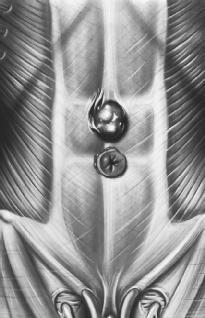Hernia - Diagnosis
Hernias are fairly easy to diagnose. A doctor can usually feel the hernia simply by touching it. The doctor may ask the patient to cough. The extra pressure caused by coughing will make the hernia stick out even more, making it even easier to feel.
A hiatal hernia is more difficult to diagnose. The first clue often comes from symptoms described by the patient, such as heartburn and chest pain after eating. A barium swallow can also be used to diagnose a hiatal hernia. A barium swallow is a procedure in which a patient swallows a chalky white substance containing barium. An X ray is then taken of the patient's digestive system. A hiatal hernia shows up as a protrusion into the diaphragm.
Hiatal hernias can also be diagnosed by endoscopy (pronounced en-DOS-kuh-pee). Endoscopy is a procedure in which a small tube is inserted through the mouth, then into the esophagus and stomach to allow the doctor to see the hernia. A hiatal hernia can actually be seen by this method.


Comment about this article, ask questions, or add new information about this topic: